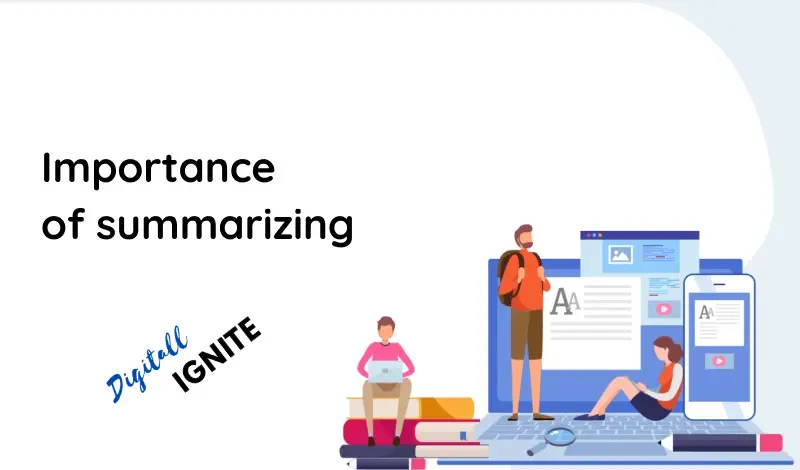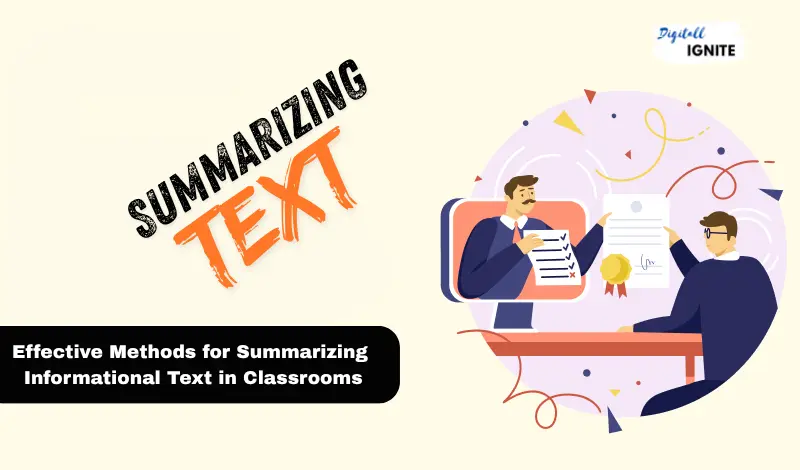- Learn how to master summarizing informational text with simple strategies, quick checks, and tips for teaching summarizing to students.
Simple Guide to Summarizing Informational Text Effectively
Summarizing informational text is a key reading skill for students of all ages. It helps learners focus on important points, understand content better, and remember facts more easily. When students learn to summarize, they also improve their writing and critical thinking. This article will guide you through effective methods for teaching and applying summarizing strategies in classrooms. Whether you’re an educator or a student, you’ll find this guide useful.
What Does Summarizing Informational Text Mean?
Summarizing informational text means finding the main ideas and important details from a piece of non-fiction writing. It’s about taking a long passage and turning it into a short, clear version without losing the key message. This skill is useful in school, work, and everyday life.
When students summarize well, they are able to:
- Identify main points
- Leave out unimportant details
- Use their own words
- Keep the meaning of the original text
Many people confuse summarizing with copying. But summarizing means understanding first, then explaining it in a short form.
Why Is Summarizing Informational Text Important?

This skill is not just for passing tests. It builds reading comprehension and helps with organizing thoughts. Students who know how to summarize can:
- Study better for exams
- Improve writing in other subjects
- Understand long articles more easily
- Write clearer reports
Teachers often use the “summarizing informational text quick check” to see how well students can shorten a text while keeping the meaning. These checks help track progress in learning.
How to Teach Summarizing
Teaching summarizing can be challenging at first. Students may not know what to include or leave out. But with the right methods, they can learn quickly. Here are some proven steps for how to teach summarizing effectively:
1. Start with Short Texts
Begin with short passages. Use simple news articles, textbook excerpts, or fact-based blog posts. Let students practice picking out the main idea from each paragraph.
2. Teach the “Somebody-Wanted-But-So-Then” Method
This method works well, especially when summarizing a story. It helps students break down the text:
- Somebody: Who is the main person?
- Wanted: What did they want to do?
- But: What was the problem?
- So: How did they try to solve it?
- Then: What happened in the end?
Although it’s often used for fiction, you can adjust it for informational text by replacing the character with the subject of the article.
3. Use Graphic Organizers
Graphic organizers like charts or diagrams help students see the structure of the text. For informational text, use a simple organizer with three columns: Main Idea, Key Details, and Summary Sentence.
4. Practice Paraphrasing
Before writing a summary, students must learn how to paraphrase. Give them short sentences and ask them to rewrite them using their own words. This helps avoid copying and encourages understanding.
5. Do a Summarizing Informational Text Quick Check
These quick checks are short exercises that test how well a student can summarize. Give them a short paragraph and ask them to write a one or two-sentence summary. Provide feedback so they know what they did right or wrong.
Common Mistakes When Summarizing
Students may face challenges in the beginning. Here are some common errors to look out for:
- Copying exact sentences from the original text
- Including too many details
- Leaving out the main idea
- Using unclear language
- Writing too short or too long summaries
Pointing out these mistakes kindly helps students learn and grow. With regular practice, their skills will improve.
Tips for Summarizing a Story
Even though this article focuses on nonfiction, summarizing a story also plays a role in learning. When summarizing a story:
- Focus on characters, setting, and plot
- Identify the problem and solution
- Leave out extra description or side events
- Use simple sentences
This builds the foundation for understanding more complex informational text later.
Fun Activities for Teaching Summarizing
Learning should be fun. Here are some activities teachers can use:
1. Summary Challenge
Give students a long article like this One. Ask them to write a summary in only few words. This pushes them to focus on the most important facts.
2. Partner Practice
Let students work in pairs. One reads the article and explains it aloud. The other writes a summary based on what they heard. Then they switch roles.
3. Headline Writing
After reading an article, ask students to write a one-line headline. Then have them explain why that headline fits the article.
4. Sentence Sorting
Cut up a summary into sentences. Mix them up and let students put them in the correct order.
How Technology Can Help
There are many online tools that help students practice summarizing. Some tools let them paste an article and generate a sample summary. Others provide short quizzes like the summarizing informational text quick check. These tools are good for extra practice at home or in class.
However, teachers should remind students that tools can help—but true understanding comes from thinking and reading deeply.
Assessment and Feedback
To know if students are learning well, regular assessment is key. Use:
- Quick summaries at the end of lessons
- Paragraph shrink (students reduce a paragraph to one sentence)
- Peer review (students read and give feedback on each other’s summaries)
When giving feedback, be specific. Tell the student what worked and what can be better. Over time, their confidence will grow.
Final Thoughts
Mastering the skill of summarizing informational text takes time and practice. But with the right guidance, tools, and strategies, both students and teachers can succeed. Whether you’re trying to teach summarizing in a classroom or learning it yourself, always remember:
- Focus on the main idea
- Use your own words
- Be clear and short
- Keep practicing
Summarizing a story or an article helps students become better readers and writers. It also makes them more thoughtful learners. So, next time you read something new, try to summarize it. You’ll understand more than you think!



